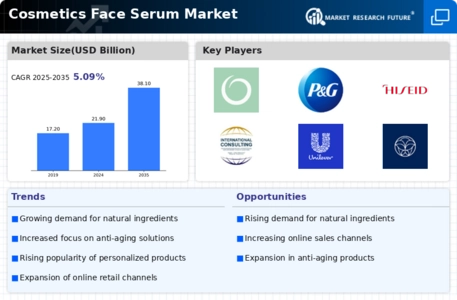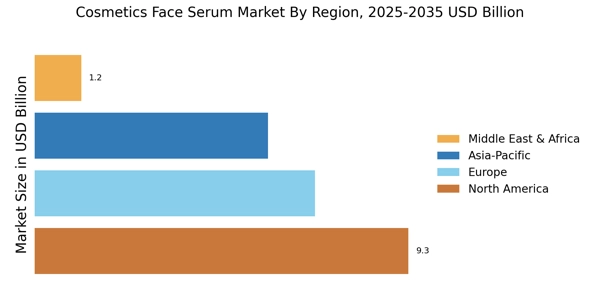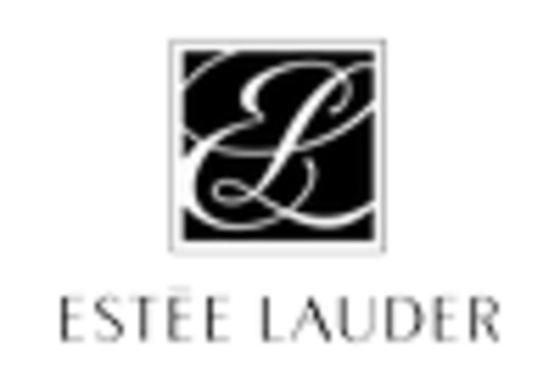Rising Demand for Anti-Aging Products
The Cosmetics Face Serum Market is experiencing a notable increase in demand for anti-aging products. Consumers are increasingly seeking solutions that address signs of aging, such as wrinkles and fine lines. This trend is driven by a growing awareness of skincare and the desire for youthful appearance. According to recent data, the anti-aging segment is projected to grow at a compound annual growth rate of approximately 7% over the next five years. This growth is indicative of a broader shift towards preventive skincare, where consumers invest in serums that promise long-term benefits. As a result, brands are innovating to create formulations that cater to this demand, incorporating advanced ingredients that enhance efficacy. The focus on anti-aging is likely to continue shaping product development strategies within the Cosmetics Face Serum Market.
Increased Awareness of Skincare Routines
There is a marked increase in consumer awareness regarding skincare routines, which is significantly influencing the Cosmetics Face Serum Market. As individuals become more educated about the importance of skincare, they are more inclined to incorporate serums into their daily regimens. This trend is particularly evident among younger demographics, who are actively seeking products that promote skin health. Market data suggests that the skincare segment, including face serums, is expected to witness a growth rate of around 5% annually. This heightened awareness is prompting brands to emphasize the benefits of serums, such as hydration and nourishment, in their marketing strategies. Consequently, the Cosmetics Face Serum Market is likely to see a surge in product launches that cater to diverse skin types and concerns, further driving market expansion.
Sustainability and Eco-Friendly Products
Sustainability is becoming a pivotal factor in consumer purchasing decisions, significantly impacting the Cosmetics Face Serum Market. As environmental concerns rise, consumers are increasingly favoring brands that prioritize eco-friendly practices and sustainable sourcing of ingredients. This shift is reflected in market data, which shows that products marketed as sustainable are experiencing a growth rate of approximately 8% annually. Brands are responding by reformulating products to eliminate harmful chemicals and adopting sustainable packaging solutions. This trend not only appeals to environmentally conscious consumers but also aligns with broader societal movements towards sustainability. Consequently, the Cosmetics Face Serum Market is likely to see a proliferation of eco-friendly products, as companies strive to meet the evolving expectations of their customer base.
Technological Advancements in Formulation
Technological advancements in formulation are playing a crucial role in the evolution of the Cosmetics Face Serum Market. Innovations in ingredient sourcing and delivery systems are enabling brands to create more effective and targeted serums. For instance, the use of encapsulation technology allows for the stable delivery of active ingredients, enhancing their efficacy. Market analysis indicates that the introduction of such advanced formulations is expected to contribute to a projected growth rate of 6% in the face serum segment over the next few years. Additionally, the rise of personalized skincare solutions, driven by technology, is likely to further influence consumer preferences. As brands leverage these advancements, the Cosmetics Face Serum Market is poised for significant transformation, with an emphasis on tailored products that meet individual skincare needs.
Influence of Social Media and Online Reviews
The influence of social media and online reviews is profoundly shaping consumer behavior within the Cosmetics Face Serum Market. As consumers increasingly rely on digital platforms for product recommendations, brands are adapting their marketing strategies to leverage this trend. Data indicates that approximately 70% of consumers are influenced by online reviews when making purchasing decisions. This shift has led to a surge in influencer partnerships and targeted social media campaigns aimed at promoting face serums. Brands that effectively engage with their audience through these channels are likely to see enhanced brand loyalty and increased sales. As social media continues to play a pivotal role in shaping consumer perceptions, the Cosmetics Face Serum Market is expected to evolve, with a greater emphasis on digital marketing strategies that resonate with consumers.


















Leave a Comment